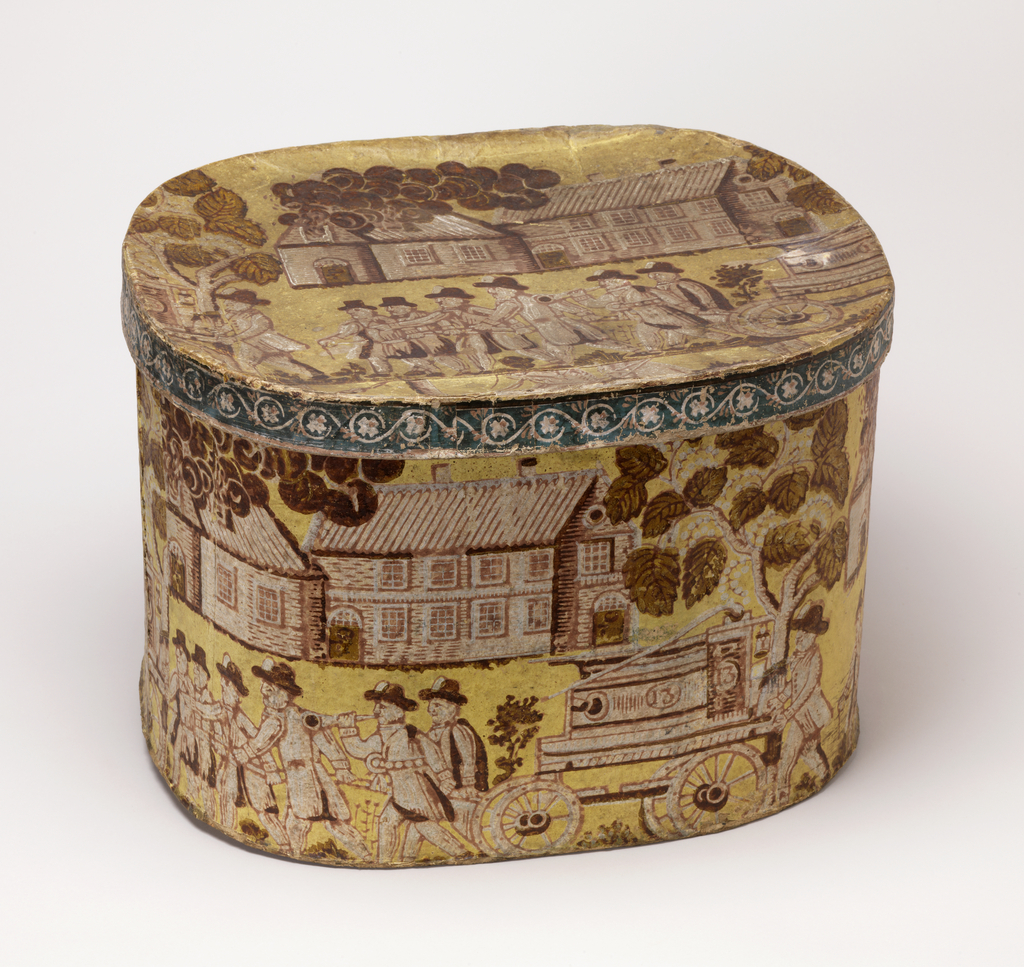Popular between 1800 and 1850, bandboxes were originally designed to store and protect the ruffled and starched collar bands fashionable for men at the time. They were also used for transporting and storing hats and as general carry-alls. Bandboxes were generally constructed of pasteboard, while the more expensive models were composed of wood. The exteriors were covered with a layer of printed paper—either wallpaper or a design printed specifically for bandbox use. Frequently, the box interior was lined with newspapers of the day.
During the 1830s and 1840s, many boxes began sporting scenes of travel and historic events. This bandbox features a fire engine that was received by Eagle Engine Company No. 13 of New York City in 1830. Painted black, with gold striping and silver-plated brass-work, it was a man-powered tub engine in which the stream of water came from the goose-neck pipe on top of the air chamber. Fire extinguishers of this type were patented by Richard Newsham of England sometime between 1721 and 1725, and the style continued both here and abroad until well into the early part of the nineteenth century. Most engine carts were hand-pulled until the mid-nineteenth century. The first steam-powered engine was built in London in 1829 and was horse-drawn. Two members of Engine Company No. 13 were killed putting out a blaze on Pearl Street in 1834, and a huge funeral procession made up of relatives, firefighters, and members of the public escorted the bodies up Broadway to the cemetery. Whether as a badge of pride to the city for owning state-of-the-art technology, or to honor fallen firefighters, this box definitely has tales to tell.
Today we are celebrating Fire Prevention Week.
